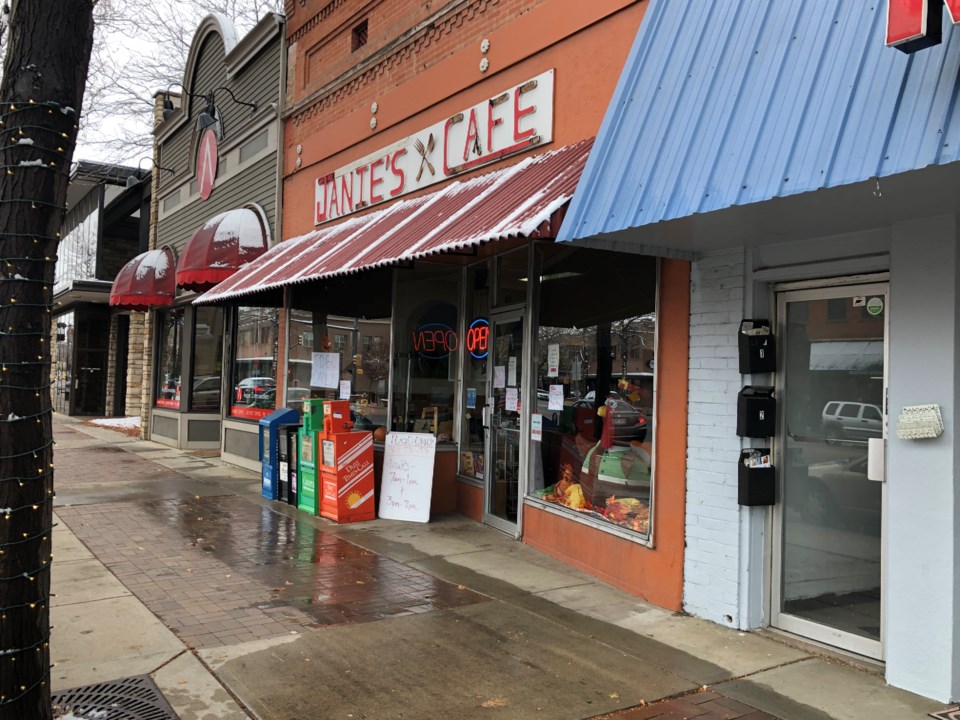Economist Patty Silverstein hopes 2022 will be a year of reset for Longmont and the country following the variability of the past two years.
Silverstein, president and chief economist for the Development Research Partners, outlined regional economic trends in Longmont for the coming year during the 2022 Advance Longmont Economic Summit, hosted by the Longmont Economic Development Partnership on Thursday.
Regionally, Silverstein highlighted that Metro Denver, encompassing the Denver and Boulder metropolitan areas, has recovered faster than the U.S. and Colorado following the short but significant recession triggered by COVID. She expects the area to recover all jobs lost due to COVID-19 by the middle of this year, just a 26 month recovery period.
In the Boulder metro area, three industries have already surpassed the number of jobs in 2019: professional and business services; manufacturing; and transportation, warehousing and utilities. Silverstein emphasized that the continued growth in the manufacturing industry is critical for Longmont.
In total, there were 199,000 jobs in the region for 2021 compared to 191,000 in 2019. Silverstein predicted job growth at a slightly slower pace for 2022.
One major issue with that growth, however, are the workforce challenges in the region. She pointed out that, while Colorado does have the 15th highest unemployment rate in the country, there are still 40,000 more job openings than unemployed people in Colorado.
Part of this comes from the fact that the state’s labor force participation rate, which is the fourth highest in the US, has also not returned to pre-pandemic levels.
The level of job resignations has increased in the state, similar to 2015, which at the time was the fastest job growth period the state had ever seen. But resignations don’t mean that folks are necessarily leaving the workforce.
“When growth is happening and new jobs are plentiful out there, what do you do?” Silverstein said. “You reevaluate.”
She added while the many resignations make sense, it doesn’t make it any easier for employers. Life events pulling people out of the workforce — like retirement and death — are trending to a more consistent level following 2020.
A major part of Colorado’s labor force is proprietors, like gig workers and entrepreneurs who work for themselves, making up 25.6% of the state’s employment. That’s the fifth highest proportion of proprietors in the country.
However, the state’s competitive position in the innovation area has been challenged in recent years, according to the Kauffman Early Stage Entrepreneurship index, dropping from the third highest in the country in 2014 to the 22nd in 2020.
Silverstein said this drop can be attributed to two main factors. Early survival rates for startups in Colorado have gone down as has the share of entrepreneurs who want to start new endeavors.
On the real estate side of things, Silverstein pointed to the continuing trend of high demand for housing mixed with incredibly low inventory. She expected home sales activity to slightly increase once again in 2022, continuing 2020 and 2021 trends and once again surpassing anything ever seen in the region.
She added that the Boulder metro saw a 21% increase in median home prices from 2020 to 2021, something that continues to challenge a region that is already the seventh most expensive metropolitan area in the country. Silverstein highlighted the fact that while regional wages have increased faster than inflation, housing costs are surpassing both.
The silver lining in this, according to Silverstein, is the number of new housing unit permits issued in the region for 2021 has reached the highest number of new permits since 1983. While those buildings haven’t necessarily been constructed, that will add to the housing supply in the area. She expects not quite as many 2022 permits, but still a high level.
In the commercial real estate market, retail and office space are remaining relatively stable while industrial space in the region is exploding. Silverstein attributed much of this increase to e-commerce growth.
With imbalances across the world economies, Silverstein warned that growth will continue to be dependent on COVID-19 trends, but that it was looking strong across the board. In the U.S., gross domestic product is up 5.6%.
Silverstein explained that part of that is due to the relief funds that have been infused into the country during the pandemic — $13.7 trillion, which means that the country’s debt is also up along with inflation.
Silverstein predicted a 4.1% increase in the U.S.’s 2022 GDP, still faster than historical trends, but less than 2021.


.jpeg;w=120;h=80;mode=crop)
